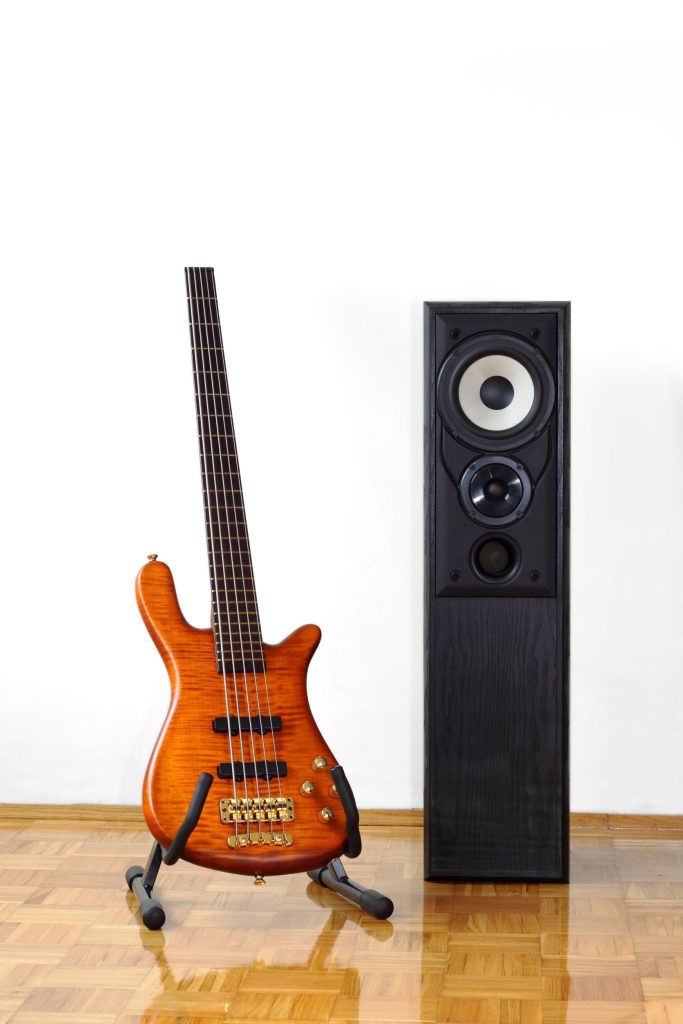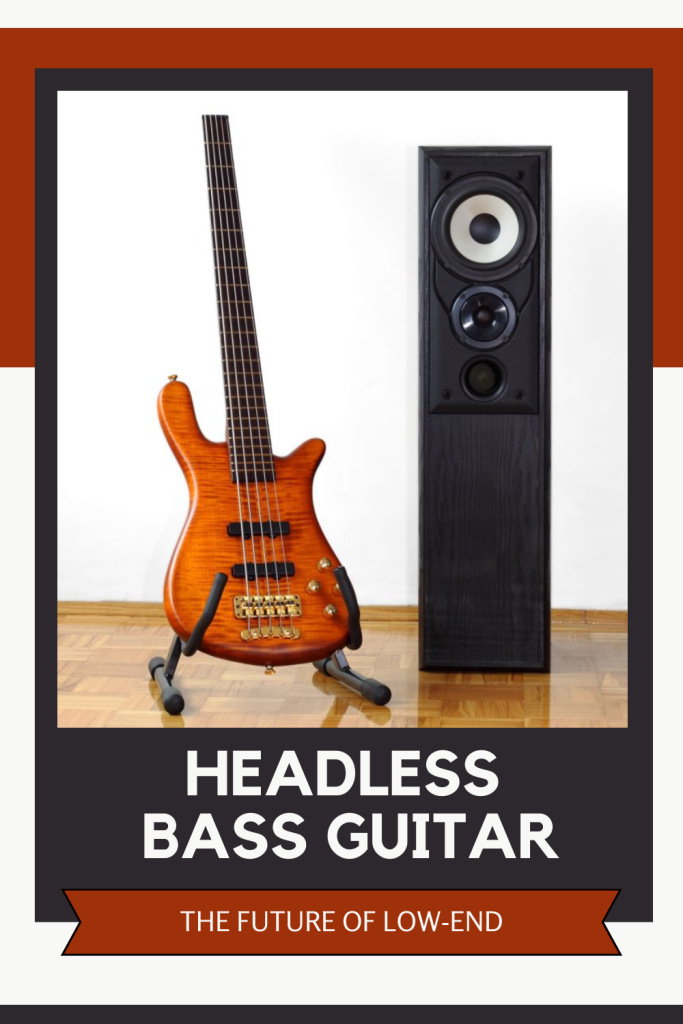Headless Bass Guitar: The Future of Low-End
A Deep Dive into the Headless Bass Guitar
As a bass player, I’ve always been fascinated by the evolution of the instrument. Therefore, I’d love to share my insights on a trend that’s reshaping the bass world: the headless bass guitar. I have owned and played several of these basses and I like the feel and light weight of most headless models.
Introduction to Headless Bass Guitars
Ever heard of a headless bass guitar? If you’re scratching your head in puzzlement, don’t fret!
What is a Headless Bass Guitar?
A headless bass guitar is precisely what it sounds like—a bass guitar without the traditional headstock. Instead, tuning is handled at the bridge end of the instrument.
Popular Models to Consider
Headless bass guitars, known for their innovative design and practical features, have gained popularity among bassists seeking lightweight, compact instruments without compromising on sound quality or playability. These basses lack the traditional headstock, with tuning mechanisms located at the bridge or body instead. This design reduces the instrument’s weight and length, making it more comfortable for playing and traveling. Here’s a brief overview of some of the most popular models of headless bass guitars:
Steinberger Basses
Steinberger basses are perhaps the most iconic headless models, introduced in the early 1980s. They feature a minimalist, composite body design and are known for their precise intonation, even sustain, and innovative hardware, including the TransTrem tremolo system. The Steinberger L-series, like the L2 and XL2, became legendary for their unique appearance and were adopted by many professional bassists for their exceptional playability and distinctive tone.
NS Design Electric Upright Basses
NS Design, founded by Ned Steinberger, offers a range of electric upright basses that are headless, designed for players looking for an instrument that combines the feel and tone of an upright bass with the convenience and versatility of an electric model. These basses are favored for their ergonomic design, ease of playing, and rich, acoustic-like tones.
Kiesel/Carvin Headless Basses
Kiesel (formerly part of Carvin) produces high-quality custom headless basses, such as the Vader and Zeus series. These instruments are known for their craftsmanship, customizable options, and advanced electronics, offering a modern playability experience and versatile sound options for players across all genres.
Ibanez EHB (Ergonomic Headless Bass) Series
The Ibanez EHB series features a lightweight, ergonomic body design with a headless construction for enhanced balance and comfort. These basses come equipped with high-quality pickups and active preamps, offering a wide range of tones suitable for various musical styles. The EHB series is noted for its playability, with a slanted body design for better access to upper frets and a specially designed bridge for easy string changes.
Strandberg Boden Bass
Strandberg is known for its headless guitars and basses, with the Boden Bass series standing out for its ergonomic design and innovative features. These basses offer a multi-scale fingerboard, lightweight chambered body, and the patented EndurNeck profile for enhanced comfort and playability. Strandberg basses are appreciated for their modern aesthetics, exceptional ergonomics, and versatile tones.
These popular models of headless bass guitars reflect the diversity and innovation in the realm of electric basses, catering to players who value ergonomics, portability, and a wide sonic palette. Whether used in studio sessions, live performances, or casual practice, headless basses continue to push the boundaries of traditional bass guitar design.

Key Differences from Traditional Bass Guitars
Beyond the absence of a headstock, headless basses often boast ergonomic designs, innovative hardware, and, of course, a futuristic aesthetic that’s sure to turn heads at your next gig.
The Appeal of the Headless Design
The headless design is gaining traction, and for good reasons. Its unique blend of form, function, and style makes it a rising star in the bass guitar universe.
The Components of a Headless Bass Guitar
Headless bass guitars consist of the same primary components as their headed counterparts, but with a few key differences.
Body
Like traditional bass guitars, the body of a headless bass can be made from various woods, each contributing to its tone. However, the design often leans toward a more compact and streamlined shape.
Neck and Fingerboard
The neck and fingerboard function as you’d expect, but without the headstock at the end. The absence of the headstock can influence the instrument’s balance and weight distribution.
Hardware
The hardware on a headless bass is specially designed to accommodate the unique configuration. The bridge not only supports the strings but also incorporates the tuners.
Benefits of Playing a Headless Bass Guitar
Headless bass guitars offer several distinct advantages that might just make you consider making the switch.
Balance and Comfort
Without the weight of a headstock, a headless bass guitar offers exceptional balance, making it more comfortable to play for extended periods.
Portability
Their compact design makes headless basses an excellent choice for traveling musicians. They’re easier to fit into cases, carry around, and even play in tighter spaces.
Stability and Durability
Thanks to their simplified design and advanced hardware, headless basses offer superior tuning stability and resistance to variations in temperature and humidity, which is a big plus for gigging musicians.
Versatility
With a headless bass, you’re not sacrificing tone or versatility. Many models come equipped with a wide range of tonal options, catering to all genres and styles of music.
Consider Your Style
Your playing style and genre greatly influence the kind of headless bass guitar that will suit you. Certain models may cater more to fingerstyle players, while others might be better suited for slap or pick techniques.
Consider Your Budget
Headless bass guitars come in a range of prices. Keep in mind that while some top-tier models can be quite pricey, there are also affordable options that don’t skimp on quality.
Regular Cleaning and Maintenance
Similar to traditional basses, headless models need regular cleaning, particularly the fingerboard and strings. The hardware also needs occasional attention to ensure smooth operation. When not in use, store your bass in a hard case to protect it from dust, humidity, and accidental knocks.

Conclusion
There you have it, the lowdown on headless bass guitars! They’re sleek, comfortable, reliable, and perfect for the modern bassist. So, will you take the leap into the future of bass playing? Rock on!
FAQs
1. Is it hard to transition from a traditional to a headless bass guitar?
Not at all! While the balance and feel may be slightly different, the fundamental playing techniques remain the same.
2. Do headless bass guitars sound different from regular ones?
The headless design itself doesn’t significantly impact the tone. The tone depends more on the body wood, electronics, and your playing technique.
3. Where can I find strings for a headless bass?
While some headless models use double-ball end strings, many modern designs can accommodate regular single-ball end strings, which are widely available.
4. How do I tune a headless bass guitar?
Tuning a headless bass is done at the bridge, using built-in tuners. These tuners work similarly to traditional ones.
5. Are headless bass guitars suitable for beginners?
Absolutely! Their balanced and compact design can make them more comfortable to play, especially for younger players or those with smaller hands.




